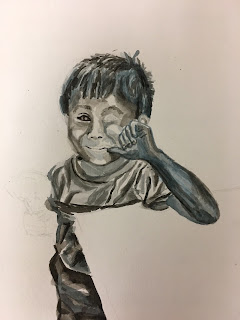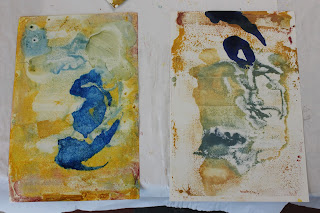Art 4: Art beyond the classroom: Personal and powerful
Waltham Mills Open studio inspired project
Come to Waltham Mills Open Studios this weekend.
Free and open to the public.
Extra credit opportunity:
Take inspiration photos
Talk with artists
add to #westonartshares
https://walthammillsopenstudios.com/
Waltham Mills Open Studio reflection questions
Authentic teaching and learning: Go out and explore-- Artists are curious, hands-on and reflective
Artists highlights and websites: Choose two artists that you are inspired by and two artists that do not.
https://walthammillsopenstudios.com/artists/
Answer the following questions:
Who is the artist?
How do you describe their work?
What about the process do you like or dislike?
If you were interviewing the artist, what questions would you ask them?
How does this artist inform your work/process/themes?
Artists highlights and websites: Choose two artists that you are inspired by and two artists that do not.
https://walthammillsopenstudios.com/artists/
Answer the following questions:
Who is the artist?
How do you describe their work?
What about the process do you like or dislike?
If you were interviewing the artist, what questions would you ask them?
How does this artist inform your work/process/themes?
Come up with working sketches to explore an process, theme that these artists are exploring.
Watercolor nature landscape painting sketches
How to start:
 | |
| Premix your pallette with color value scales |
 |
| For shadows use complementary color value scales |
 |
| Start wet on wet. Float color onto water painting |
 |
| Build up detail by glazing. Make sure 1st layer is dry. Build up contrast. use smaller brush |
 |
| Adding detail with fine line brushes and implied texture |
-Go on a nature walk and bring in a few objects to paint
or you can work on-site
-Review and complete color value scales based on objects and landscape that you intend to paint
-Quick studies of interesting flora and nature objects.
-Your goal is to work on your accuracy of color as well as being patient with watercolor. Remember that the colors must dry to build up depth and color transitions.
-These pieces are all studies, no masterpieces.Working through the process is the goal. Practice makes progress.
-These studies maybe used as a source of inspiration for a larger painting.
Candy painting
Bring in your favorite wrapped candy to incorporate in still life
-small candy painting study
-Larger canvas candy painting
Experimental Line workshop
Experimental workshop- Line in visual language-Factors that affect line
Activity 1:
Using
one simple still life form,
experiment with different ways you can express the same form. Try out
the suggestions below. Use the sketchbook that I made you and label each
experiment:Different media and applicators:
1. Pen and ink
2. Color pastel
3. Charcoal
4. Pen and watercolor
5. Fingers, use tempera paint in bottles. Squeeze out colors in yogurt containers.
6. Tree branch- find then and use sumi ink
7. Sponge
8. Palette knives
Different speed- slow to fast
Different intensities- Light soft vs. dense heavy. Very
diluted to heavy
Different modulation- The shape formed by the line. Sinuous,
splattered, short brushstrokes, scraping
Supports- paper, wood, canvas, burlap, found objects
Supports- paper, wood, canvas, burlap, found objects
Project 1:Based on your experimental example,
create a mixed media piece or painting that demonstrates how you decided to
express your line quality.
Activity 1
Using one simple still life form,
experiment with different ways you can express the same form. Try to use a
different variation for each of the factors.
Come up with at least six examples. Stretch outside your comfort.
Based on your experimental example,
create a mixed media piece or painting that demonstrates how you decided to
express your line quality.
Activity 2
Choose 2 different medias that you might be interested in exploring and preparing for your expressive self-portrait surface or the actual drawing or painting of your self-portriat. You may propose your own materials and media as well.The self portrait maybe one focused piece or an exploration of process pieces.
Activity 2
Choose 2 different medias that you might be interested in exploring and preparing for your expressive self-portrait surface or the actual drawing or painting of your self-portriat. You may propose your own materials and media as well.The self portrait maybe one focused piece or an exploration of process pieces.
Mixed media marathon refresher:
Pen and ink
Watercolor experimental techniques: Straw, salt, saran wrap, water spray, sponge
Woodcarving tools
Phototransfers: Fresh photocopy, gel medium, old brush, sponge
Monoprints
Marbled paper
Expressive Self-portrait with Sumi ink
 |
| Black,white photo |
 |
| Grid up paper and photo and draw to scale |
Dark room interior expressive drawings
Activity 3: Practice drawing an observational self-portrait using charcoal and pencil. Try two different perspectives.
Project 1: Expressive self-portrait (Alice Neel influence). Pastels or paint.Considers ones environment and psychology.
SELF-IDENTITY STAR handout
AKUA PRINTMAKING INKS- Printmaking
Wood block printing and Drypoint
Landscape oil painting-Atmospheric perspective
Atmospheric perspective-Atmospheric perspective – also called aerial perspective – is the effect you get when far away objects take on the colors of atmospheric haze.
Contrast decreases considerably with distance due to this phenomenon. This means that there isn't a lot of difference between the lightest light color and the darkest dark. Saturation with distant objects also decreases with distance. However, brightness increases due to atmospheric perspective. As objects fade further into the background, they become brighter according to how much contrast is lost. Finally, atmospheric perspective may be weakened substantially with bright light. The lit area retains more of its original contrast and saturation. Emphasizing this area is one way artists can add drama or mood to a piece.
Why is the ocean from a distance yellow, violet grey?
Why does the sky that is closest to the horizon line appear lighter in value?
ATMOSPHERIC PERSPECTIVE
6 ways to increase depth in a landscape painting
1. Overlap various
elements within your composition so that some are forced forward or backward in
the scene.
2. Use less detail,
texture, and definition when painting objects in the mid-ground and background
of the landscape.
3. Paint with lighter
values and less contrast for distant elements
4. Use cooler colors
to push elements farther into the background.
5. Use warmer, darker
colors to bring elements forward into the foreground.
6. As elements recede
in the distance, paint them at a much smaller scale than objects in the
foreground.
How to paint Clouds
How to paint clouds
1. Mix cool and warm grays using primary color- Red, Yellow, Blue. Add white and tint as needed
2. Thin paint with water. Use medium size brush to describe movement of clouds but also allow the skyholes to appear.
3.Lay cool grey to add the shadows of the clouds (blue grey)
4. Lay warm grey for highlights of the clouds (yellow grey)
5. With separate brush blend to soften edges as needed.
Surrealist painting: Art of fauna(Remedios Vero influenced)
- Fantastic beasts. Students will create work of art based on a fantasy view of animals- either actual animals depicted in a fantasy scene or invented creates such as unicorns or dragons. Keep in mind the endless ways to experiment with line. This lesson is open as a drawing, painting, or mixed media piece.
Remedios Vero images
Amy Ross
Refer to surrealist books for landscape options
Art proposals:
Potential Senior class mural/installation
Refreshing exercises:
Look over work from last term. Have students bring in their work in progress.
Ask them to consider one of the six creative techniques from one of their pieces:
Show evidence of on separate piece of paper. These will be creative strategy samples
1. Substitute something
2. Combine with something else
3. Adapt something to it
4. Modify or magnify it
5. Put it to some other use
6. Eliminate something
7. Reverse or rearrange it
Art 4 concentration portfolio project proposal
Reasoning: Why do you want to do this/ why does this project make sense for you?
Procedure:
* Map out a visual game plan and strategy as to how you will execute your project. Prepare your inspiration boards/posts either on a blog or website. Suggestions: may consider using Art.sy, tumblr, blogger.
* Goal set- Set a goal for yourself- could be a time management piece, actual # artwork you complete, new technique to try out, or inspiration blog set up.
* What artists, subject, theme influence your work?
Consider referring to inspiration box, board
* What materials and processes will you experiment with?
* Which design choice will you make?
* Show me at least 3 different designs of the same subject/ theme
* Artist statement that you will add to the art blog with process pictures
Personal growth reflection
Taking creative risks
through the artistic process
Are you satisfied with
your PERSONAL GROWTH PROJECT? If you had more time, how would you envision
developing your work?
When you were first
assigned to the project, how did you feel?
What changes did you
make during your artistic process?
Were you surprised by
the outcome of your project? Did these unexpected outcomes strengthen your
piece? If so, how so?
Please describe a moment
when you grew from this experience as an artist and person.
FINAL PROJECT: INFLATABLE SCULPTURE
 |
 |
| Thick garbage bag, scissors, tape |
 |
| Drawing with body part, make sure limbs are drawn separately |
 |
| Cut out template |
 |
| Make two of each body part with template |

















































.MOV)
.JPG)
No comments:
Post a Comment